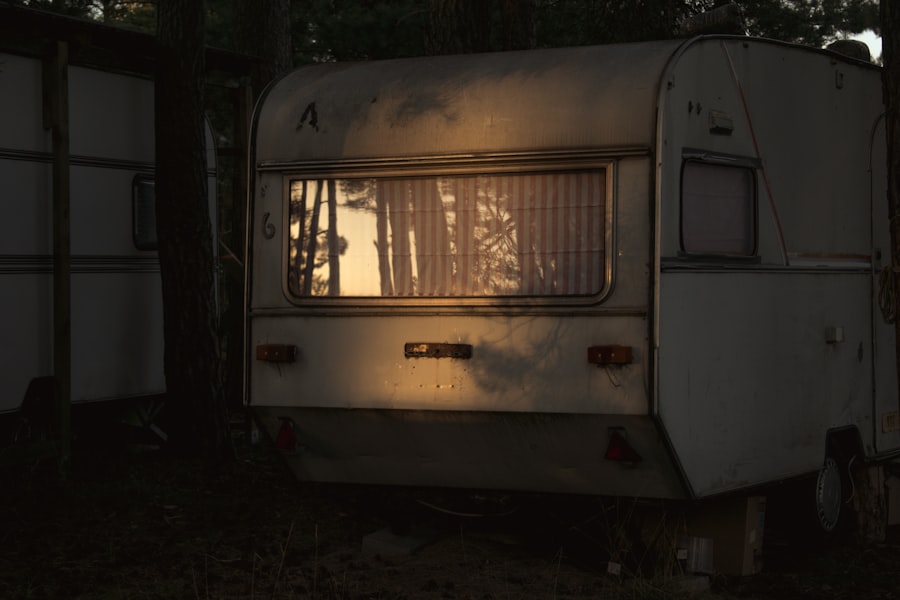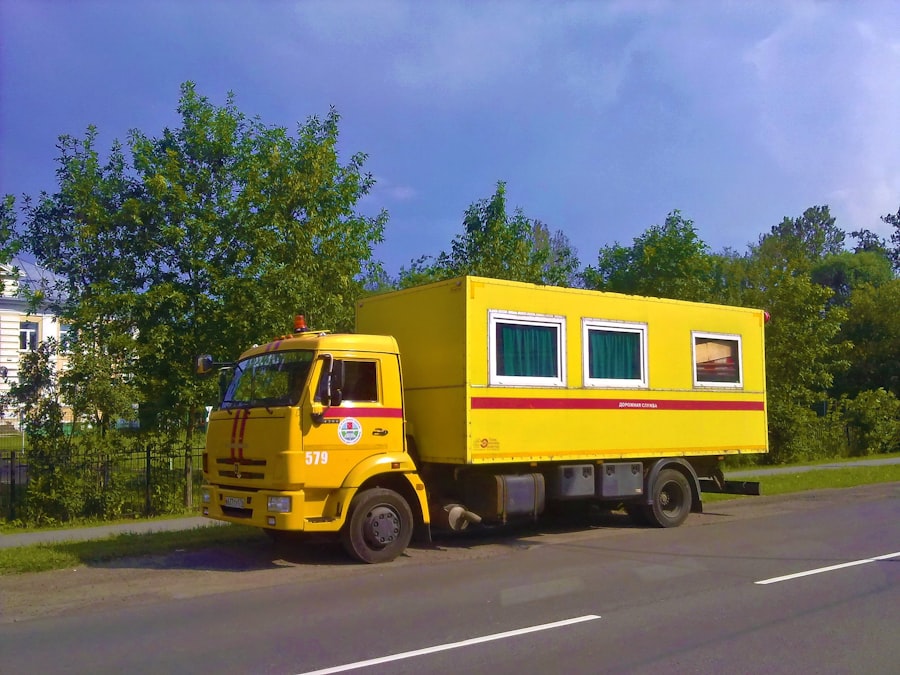The evolution of double wide trailers can be traced back to the post-World War II era, a time when the United States experienced a significant housing shortage. As returning soldiers sought affordable housing options, the mobile home industry began to flourish. Initially, single wide trailers dominated the market, but as families grew and lifestyles changed, the demand for larger living spaces became evident.
By the 1970s, manufacturers began producing double wide trailers, which offered more square footage and a more traditional home-like feel compared to their single wide counterparts. The design of double wide trailers was revolutionary for its time. These homes are constructed in two sections that are transported separately and then joined together on-site, creating a spacious living environment that often rivals traditional homes in terms of layout and comfort.
The introduction of double wide trailers not only provided a solution to the housing crisis but also paved the way for a new way of living that combined affordability with mobility. Over the decades, advancements in construction techniques and materials have further enhanced the appeal of double wide trailers, making them a popular choice for many families across the country.
Key Takeaways
- Double wide trailers have a long history, dating back to the 1940s when they were first introduced as a more affordable housing option for families.
- Living in a double wide trailer offers advantages such as affordability, flexibility, and the ability to customize the interior, but it also comes with disadvantages like limited resale value and potential stigma.
- When it comes to design and layout options, double wide trailers offer a variety of floor plans and customization options to suit different preferences and needs.
- Cost and financing options for double wide trailers vary, with options for both buying and renting, as well as different financing options such as traditional mortgages or chattel loans.
- Maintenance and upkeep of double wide trailers are essential for preserving the value and longevity of the home, including regular inspections, repairs, and proper care of the exterior and interior.
- The environmental impact of double wide trailers can be significant, as they often require more energy for heating and cooling, and may have a larger carbon footprint compared to traditional homes.
- Community and lifestyle in double wide trailer parks can offer a sense of community and affordability, but may also come with challenges such as noise, limited privacy, and potential stigma.
- Tips for buying and owning a double wide trailer include researching local zoning laws, understanding financing options, conducting thorough inspections, and carefully considering the long-term implications of living in a double wide trailer.
Advantages and Disadvantages of Living in a Double Wide Trailer
Living in a double wide trailer comes with a unique set of advantages that appeal to a diverse range of individuals and families. One of the most significant benefits is affordability. Compared to traditional homes, double wide trailers typically have lower purchase prices and reduced property taxes, making them an attractive option for first-time homebuyers or those looking to downsize.
Additionally, many double wide trailers are situated in mobile home parks that offer amenities such as community centers, swimming pools, and recreational areas, fostering a sense of community among residents. However, there are also disadvantages to consider when it comes to living in a double wide trailer. One major concern is depreciation; unlike traditional homes that often appreciate in value over time, mobile homes can lose value, particularly if they are not well-maintained or if they are located in less desirable areas.
Furthermore, zoning laws and regulations can limit where double wide trailers can be placed, which may restrict options for potential buyers. Additionally, some individuals may face stigma or misconceptions about living in mobile homes, which can affect their social standing or sense of belonging within certain communities.
Design and Layout Options for Double Wide Trailers

Double wide trailers offer a plethora of design and layout options that cater to various tastes and lifestyles. Typically ranging from 1,000 to 2,500 square feet, these homes can be customized to include multiple bedrooms, bathrooms, and open-concept living spaces. Many manufacturers provide floor plans that allow buyers to choose between different configurations, such as having a separate dining area or an expansive kitchen island that serves as a focal point for family gatherings.
In addition to standard layouts, homeowners can personalize their double wide trailers with various design elements. For instance, modern double wides often feature upgraded materials such as hardwood flooring, granite countertops, and energy-efficient appliances. Exterior options also abound; homeowners can select from a variety of siding materials, roofing styles, and porch designs to create a unique aesthetic that reflects their personal style.
This level of customization allows residents to create a space that feels like home while still enjoying the benefits of mobility.
Cost and Financing Options for Double Wide Trailers
| Financing Option | Interest Rate | Loan Term | Down Payment |
|---|---|---|---|
| Bank Loan | 4.5% | 15 years | 20% |
| Manufacturer Financing | 5.2% | 20 years | 15% |
| Personal Loan | 6.0% | 10 years | 25% |
The cost of purchasing a double wide trailer can vary significantly based on factors such as size, location, and amenities. On average, prices can range from $50,000 to $150,000 or more. This affordability makes double wide trailers an appealing option for many buyers who may find traditional homes out of reach due to rising real estate prices.
Additionally, the lower cost of living associated with mobile homes can lead to significant savings over time. Financing options for double wide trailers are also diverse. Many buyers opt for personal loans or chattel loans specifically designed for mobile homes.
These loans typically have shorter terms and higher interest rates compared to traditional mortgages but can be easier to obtain for those with limited credit histories. Some lenders also offer FHA loans for manufactured homes, which can provide more favorable terms for qualified buyers. Understanding the various financing options available is crucial for prospective homeowners to make informed decisions that align with their financial situations.
Maintenance and Upkeep of Double Wide Trailers
Maintaining a double wide trailer is essential for preserving its value and ensuring a comfortable living environment. Regular upkeep includes routine inspections of the roof, plumbing systems, and HVAC units to prevent costly repairs down the line. Homeowners should also pay attention to the exterior siding and foundation; ensuring that these elements remain in good condition is vital for preventing water damage and structural issues.
In addition to routine maintenance tasks, homeowners should be proactive about addressing any signs of wear and tear. For example, if leaks are detected around windows or doors, it is crucial to repair them promptly to avoid mold growth or further damage. Landscaping around the trailer should also be managed carefully; overgrown vegetation can lead to pest infestations or damage to the home’s exterior.
By staying vigilant about maintenance and upkeep, residents can enjoy their double wide trailers for many years while minimizing potential issues.
Environmental Impact of Double Wide Trailers

The environmental impact of double wide trailers is a multifaceted issue that warrants careful consideration. On one hand, mobile homes are often more energy-efficient than traditional houses due to their smaller size and modern construction techniques. Many manufacturers now incorporate sustainable materials and energy-efficient appliances into their designs, which can reduce overall energy consumption and lower utility bills for residents.
However, there are also environmental concerns associated with the production and placement of double wide trailers. The manufacturing process can generate waste and emissions that contribute to pollution if not managed responsibly. Additionally, the placement of mobile home parks can lead to land use changes that disrupt local ecosystems or contribute to urban sprawl.
As awareness of environmental issues grows, many manufacturers are exploring ways to minimize their ecological footprint through sustainable practices and materials.
Community and Lifestyle in Double Wide Trailer Parks
Living in a double wide trailer park often fosters a unique sense of community among residents. Many parks are designed with social interaction in mind, featuring communal spaces such as clubhouses, playgrounds, and picnic areas where neighbors can gather and connect. This sense of camaraderie can be particularly appealing for families or retirees seeking companionship and support within their living environment.
The lifestyle in trailer parks can vary widely depending on location and demographics. In some areas, parks may cater primarily to retirees seeking a peaceful environment with recreational activities tailored to their interests. In contrast, other parks may attract families looking for affordable housing options while still providing access to schools and amenities.
Regardless of the demographic makeup, many residents find that living in a trailer park offers opportunities for friendship and community engagement that enhance their overall quality of life.
Tips for Buying and Owning a Double Wide Trailer
When considering the purchase of a double wide trailer, prospective buyers should conduct thorough research to ensure they make an informed decision. One essential tip is to visit multiple manufacturers and model types before settling on a specific design; this allows buyers to compare features, prices, and quality across different options. Additionally, it is advisable to read reviews from current owners to gain insight into the long-term satisfaction associated with particular models.
Once a purchase is made, new owners should familiarize themselves with local regulations regarding mobile homes. Understanding zoning laws and park rules is crucial for ensuring compliance and avoiding potential issues down the line. Furthermore, establishing a maintenance routine early on can help preserve the home’s value; regular inspections and timely repairs will contribute significantly to the longevity of the trailer.
By taking these steps, new homeowners can enjoy the benefits of their double wide trailers while minimizing challenges associated with ownership.

